Heart With No Beat Offers Hope Of New Lease On Life
鼓動のない心臓が延命治療に望み
by Carrie Feibel
June 13, 2011

Courtesy of the Texas Heart Institute
An X-ray shows the dual turbinelike blood pumps that replaced Craig Lewis' heart. These devices were used in a last attempt to save his life.
テキサス心臓研究所提供
X線がクレイグ・ルイスの心臓に替えて埋め込まれたタービンのような血液ポンプを映している。
June 13, 2011 from KUHF
The search for the perfect artificial heart seems never-ending. After decades of trial and error, surgeons remain stymied in their quest for a machine that does not wear out, break down or cause clots and infections.完全な人工心臓の探求には終わりがない。数十年もの試行錯誤の後、外科医は損耗せず、故障せず、血栓や感染症も引き起こさない機械の探求途上で挫折していた。
But Dr. Billy Cohn and Dr. Bud Frazier at the Texas Heart Institute say they have developed a machine that could avoid all that with simple whirling rotors — which means people may soon get a heart that has no beat.しかし、テキサス心臓研究所のビリー・コーン博士とバッド・フレイザー博士は簡単なクルクル回るローターでそれらの問題を避けることができる機械を開発したと言っている。 ―――それは人々が鼓動のしない心臓を間もなく手に入れることを意味している。
Inside the institute's animal research laboratory is an 8-month-old calf with a soft brown coat named Abigail. Cohn and Frazier removed Abigail's heart and replaced it with two centrifugal pumps.その研究所の動物リサーチ研究室には生後8か月の淡い茶色肌のアビゲイルと名付けられた子牛がいる。両博士はそのアビゲイルの心臓を摘出し、二個の遠心分離ポンプを埋め込んだ。
"If you listened to her chest with a stethoscope, you wouldn't hear a heartbeat," says Cohn. "If you examined her arteries, there's no pulse. If you hooked her up to an EKG, she'd be flat-lined."もし、あなたがこの子牛の胸部に聴診器を当ててたとしても、何の心音も聞こえないし、子牛の脈を計ったとしても何の拍動も無い。そして、心電図にかけたとしても、その線はフラットで波をうたないだろう。
The pumps spin Abigail's blood and move it through her body.
"By every metric we have to analyze patients, she's not living," Cohn says. "But here you can see she's a vigorous, happy, playful calf licking my hand."二個のポンプはアビゲイルの血液をスピンさせて体中に流している。あらゆるメトリックで我々は患者(子牛のアビゲイル)を分析しなければならない、子牛は生きてはいない(心臓が無い)が、元気で、幸せそうで、遊び好きで私の手を舐めているとコーン博士は言っている。
Human Trials 人体への試み
In March, after practicing on 38 calves, Cohn and Frazier felt confident enough to try their device on a human patient. They chose Craig Lewis, a 55-year-old who was dying from amyloidosis, which causes a buildup of abnormal proteins. The proteins clog the organs so much that they stop working.三月に、38頭の子牛で実験の後、コーン博士とフレイザー博士は人体への試みに十分な自信を感じ取った。彼らは異常なプロテインの増殖を引き起こすアミロドーシスで瀕死の状況にあった55歳のクレイグ・ルイス氏をその対象に選んだ。プロテインの塊が器官に詰まり機能を停止させる病気である。
In Lewis' case, his heart became so damaged, doctors said he had about 12 hours left to live. ルイス氏の場合は心臓へのダメージがひどく、余命は12時間であった。
His wife, Linda, said they should try the artificial heart.彼女の妻リンダは博士たちが人工心臓を試みることを望んだ。

Craig Lewis before he fell ill with amyloidosis. He was the first human patient to undergo the experimental surgery that would outfit him with two ventricular assist devices, replacing his entire heart. Craig Lewis died in April, though his doctors say his artificial heart worked perfectly.アミロイドシスで死亡する前のクレイグ・レイス氏。 彼は実験的な手術をうける最初の患者であった。その手術では心臓をまるごと二つの血液循環装置と入れ替えて彼の身体に埋め込んだが4月に亡くなった。しかしながら医師達は人工心臓は完璧に機能したと言っている。
"He wanted to live, and we didn't want to lose him," she says. "You never know how much time you have, but it was worth it."「彼は生きることを望んだし、我々は誰も彼を失いたくなかった。彼があとどれくらい生きられるかは誰にもわからないが、手術は試みる価値があった。」と彼女は述べている。
Lewis worked for the city of Houston, helping to maintain the city's vast system of wastewater pumps.
At home, in his garage, Lewis dabbled in woodworking, metalsmithing and what his wife calls general "piddling around."ルイスはヒューストン市で勤務し、市の下水ポンプの巨大なシステムの維持管理の仕事をしており、家庭でも木工だの金属加工など少しかじっている、妻に言わせると一般的な「素人の遊び」程度だが。
"He would go into his shop and create or fix or modify something to make it work," she says.
That's what his two doctors did, too. Linda Lewis says her husband appreciated how the doctors cobbled together the pulseless heart from various materials.彼だったら作業場に行って修理したり、なにか改造して機能するようにするでしょう。この二人の医師がやったことは正にそれと同じで、主人は彼らが色々な素材から拍動しない心臓を工夫して作製したことに感謝していたと、妻のリンダ・ルイスは述べている。
"Dacron on the inside and fiberglass impregnated in silicone on the outside," Cohn says. "There's a moderate amount of homemade stuff on here."テトロンを内側にそしてシリコンを染み込ませたグラスファイバーを外側にと或る程度の手作りのものもあるとコーン博士は言っている。
Cohn and Frazier did not start totally from scratch. They took two medical implants known as ventricular assist devices and hooked them together.両博士は全くのゼロから始めたわけではなかった。彼らは心室補助装置として知られる二つのメディカルインプラントを採用し、それらを繋ぎ合わせのだ。
A ventricular assist device has a screwlike rotor of blades, which pushes the blood forward in a continuous flow.心室補助装置はスクリュー状の翼のついたローターで血液を押し出して継続的な血流を促すものである。
Thousands of people have one of these implanted close to their hearts, including former Vice President Dick Cheney. By using two, the doctors replaced both the right and left ventricles — the entire heart.多くの人がこの種のインプラントを心臓の近傍に移植しており、前副大統領のディック・チェイニー氏もその一人である。これらの二つのを利用して博士達は左右両方の心室即ち心臓全体をこの装置に替えた。
"I listened and it was a hum, which was amazing," Linda Lewis says. "He didn't have a pulse."ブーンという音が聴こえたが、驚いたことに心拍音は無かったとリンダ・ルイスは話している。
The doctors say the continuous-flow pump should last longer than other artificial hearts and cause fewer problems. That's because each side has just one moving part: the constantly whirling rotor.But Cohn says they will still have to convince the world that you don't need a pulse to live.
血流持続ポンプは間違いなく他の人工心臓よりも長持ちし、問題が少ないと博士達は話している。なぜならば左右のそれぞれが常にグルグル回るたった可動部をたった一つかもっていないからだ。 しかしコーン博士は生存に拍動は必要ないということを、まだ世界に納得させる必要があると述べている。
"We look at all the animals, insects, fish, reptiles and certainly all mammals, and see a pulsatile circulation," he says. "And so all the early research and all the early efforts were directed at making pulsatile pumps."
また、我々は全ての動物、昆虫、魚、爬虫類そして確かにすべての哺乳類を見て脈動による循環を納得しているが故に、全ての初期の研究は拍動を起こすポンプに努力が志向されてきたと彼は言う。
However, the only reason blood must be pumped rhythmically instead of continuously is the heart tissue itself.
しかしながら、血液が継続的ではなく、リズミカルに強弱をつけて送出されなければならない理由は心臓組織そのものの側にある。
"The pulsatility of the flow is essential for the heart, because it can only get nourishment in between heartbeats," Cohn says. "If you remove that from the system, none of the other organs seem to care much."
血流の拍動は「心臓自身」にとっては大事なことなのである、なぜなら拍動の収縮と膨張の間でしか心臓は自身に必要な栄養素を摂取できないからである。だから、もし心臓そのものをシステムから無くすと、あとは拍動に拘る必要は体の他の器官にはないのである。
Progress and Setbacks 前進と後退
After the implant, Craig Lewis woke up and recovered somewhat. He could speak and sit up in a chair.
But then he began to fade as the disease attacked his liver and kidneys.
移植後、クレイグ・ルイス氏は目覚めて、ある程度回復し、話すことも体を起こして椅子に座ることもできたが、やがて彼の肝臓と腎臓が病気に侵されて弱り始めた。
"Amyloidosis is horrible," Linda Lewis says. "I could see the other organs were not cooperating."
アミロイド症は非常に恐ろしい病気で他の器官が同調しないことがわかったとリンダ・ルイスは語った。

Courtesy of the Texas Heart Institute
Steven Parnis, assistant director of technology development at the Texas Heart Institute, prepares the pair of ventricular assist devices for surgery. These devices use spinning rotors to circulate blood, instead of rhythmic contractions.
テキサスヘルス研究所提供
テキサスヘルス研究所の技術開発部長助手のスティーブ・パニス氏が手術のために二個の心室補助装置を準備している。これらの装置は、リズミックな収縮ではなく、回転ローターで血流を生み出す。
Craig Lewis lived for more than a month with the pulseless heart. He died in April, due to the underlying disease. His doctors say the pumps themselves worked flawlessly.
クレイグ・ルイスは拍動のない人工心臓でひと月以上生存し、四月に本来抱えていた病気で四月に死亡した。担当医師達によると人工心臓自体は問題なく機能していたとのこと。
"We knew if it wasn't a success for Craig, if they could get data that would help them, if it helps the next person, then you did good," Linda Lewis says.
クレッグについて失敗だったかどうか、参考になるデータが得られたかどうか、これからの患者の参考になるかどうかが分かっただけで十分だと妻のリンダ・ルイスは語っている。
Biomedical companies worldwide are still trying to perfect a pulsing artificial heart. But Cohn says those companies are like the last buggy-whip manufacturers: fine-tuning a product that will soon become obsolete.
世界中のバイオメディカルの会社は、いまだに完全な拍動式人工心臓の製作を試みているが、それらは、すぐに時代遅れになった高精度チューニング用の最後のラジオアンテナの製作会社のようなものであるとコーン博士は話している。
He is sympathetic to their efforts, though. He points out that the history of invention is full of dead ends.
彼は、これらの発明の歴史というものは多くの人々の犠牲の上になりたっていると指摘して彼らの努力には理解をしめしている。
"When man first tried to come up with machines that flew, he looked around and saw bats and birds and butterflies and mosquitoes," Cohn says. "Everything had wings that flapped." But what works in nature is often not the only mechanical solution, or even the best one.
人類が飛翔する機械を初めて製作しようとしたとき、まず周りを見て、蝙蝠や鳥や蝶々や蚊を観察し、全て羽ばたく羽根を持っていることを発見した。 しかし、自然界で機能するものだけがメカニカルな解決策ではないし、ベストの解決策だとは限らない。
"When they saw that you could create wind, and that wind over a fixed wing was a great way to provide lift, then the whole field shifted," Cohn says. "There are very few flying machines in modern times that have flapping wings. And I think this is the same intellectual leap in pumping blood or pumping fluids."
人類が風を作り出すことができ、固定翼の上部をその風が流れることで固定翼に大きな揚力を生じさせることを発見したとき、全ての科学分野はそこへ集中したが、現代では回転翼の航空機はむしろ非常に少なくなっている。 この新しい拍動しない人工心臓も「血液や液体の流動はポンピング」という固定概念からの知的飛躍という意味で同じであるとコーン博士は話す。
In order to bring a continuous-flow artificial heart to the market, the doctors will have to decide on a final design, find a manufacturer and get FDA approval.
血流持続人工心臓を市場にデビューさせるためには、両博士は最終デザインを決め、その製作会社を見つけ、FDAの認可をもらわなければならない。
Although there's more work to be done, Frazier says he's confident the pulseless approach will win out in the end.
"These pumps don't wear out," he says. "We haven't pumped one to failure to date."
まだやるべき作業は残っているが、これらの人工心臓は損耗しないし、現在のところ失敗作はないので、無拍動のアプローチは最終的には勝ち残るとフレイザー博士は自信をのぞかせる。
The tradeoff, of course, is the loss of the familiar, primordial sound of a beating human heart. For these surgeons, though, that's a small, poetic price to pay to make medical history.
もちろん失うものはある、それは慣れ親しんだ本来の人間の心臓の拍動のリズム音である。 それでも、この両博士にとっては、その対価は医学の歴史のなかで支払うべき、小さなセンチメンタルな代価にすぎない。
鼓動のない心臓が延命治療に望み
by Carrie Feibel
June 13, 2011

Courtesy of the Texas Heart Institute
An X-ray shows the dual turbinelike blood pumps that replaced Craig Lewis' heart. These devices were used in a last attempt to save his life.
テキサス心臓研究所提供
X線がクレイグ・ルイスの心臓に替えて埋め込まれたタービンのような血液ポンプを映している。
June 13, 2011 from KUHF
The search for the perfect artificial heart seems never-ending. After decades of trial and error, surgeons remain stymied in their quest for a machine that does not wear out, break down or cause clots and infections.完全な人工心臓の探求には終わりがない。数十年もの試行錯誤の後、外科医は損耗せず、故障せず、血栓や感染症も引き起こさない機械の探求途上で挫折していた。
But Dr. Billy Cohn and Dr. Bud Frazier at the Texas Heart Institute say they have developed a machine that could avoid all that with simple whirling rotors — which means people may soon get a heart that has no beat.しかし、テキサス心臓研究所のビリー・コーン博士とバッド・フレイザー博士は簡単なクルクル回るローターでそれらの問題を避けることができる機械を開発したと言っている。 ―――それは人々が鼓動のしない心臓を間もなく手に入れることを意味している。
Inside the institute's animal research laboratory is an 8-month-old calf with a soft brown coat named Abigail. Cohn and Frazier removed Abigail's heart and replaced it with two centrifugal pumps.その研究所の動物リサーチ研究室には生後8か月の淡い茶色肌のアビゲイルと名付けられた子牛がいる。両博士はそのアビゲイルの心臓を摘出し、二個の遠心分離ポンプを埋め込んだ。
"If you listened to her chest with a stethoscope, you wouldn't hear a heartbeat," says Cohn. "If you examined her arteries, there's no pulse. If you hooked her up to an EKG, she'd be flat-lined."もし、あなたがこの子牛の胸部に聴診器を当ててたとしても、何の心音も聞こえないし、子牛の脈を計ったとしても何の拍動も無い。そして、心電図にかけたとしても、その線はフラットで波をうたないだろう。
The pumps spin Abigail's blood and move it through her body.
"By every metric we have to analyze patients, she's not living," Cohn says. "But here you can see she's a vigorous, happy, playful calf licking my hand."二個のポンプはアビゲイルの血液をスピンさせて体中に流している。あらゆるメトリックで我々は患者(子牛のアビゲイル)を分析しなければならない、子牛は生きてはいない(心臓が無い)が、元気で、幸せそうで、遊び好きで私の手を舐めているとコーン博士は言っている。
Human Trials 人体への試み
In March, after practicing on 38 calves, Cohn and Frazier felt confident enough to try their device on a human patient. They chose Craig Lewis, a 55-year-old who was dying from amyloidosis, which causes a buildup of abnormal proteins. The proteins clog the organs so much that they stop working.三月に、38頭の子牛で実験の後、コーン博士とフレイザー博士は人体への試みに十分な自信を感じ取った。彼らは異常なプロテインの増殖を引き起こすアミロドーシスで瀕死の状況にあった55歳のクレイグ・ルイス氏をその対象に選んだ。プロテインの塊が器官に詰まり機能を停止させる病気である。
In Lewis' case, his heart became so damaged, doctors said he had about 12 hours left to live. ルイス氏の場合は心臓へのダメージがひどく、余命は12時間であった。
His wife, Linda, said they should try the artificial heart.彼女の妻リンダは博士たちが人工心臓を試みることを望んだ。

Craig Lewis before he fell ill with amyloidosis. He was the first human patient to undergo the experimental surgery that would outfit him with two ventricular assist devices, replacing his entire heart. Craig Lewis died in April, though his doctors say his artificial heart worked perfectly.アミロイドシスで死亡する前のクレイグ・レイス氏。 彼は実験的な手術をうける最初の患者であった。その手術では心臓をまるごと二つの血液循環装置と入れ替えて彼の身体に埋め込んだが4月に亡くなった。しかしながら医師達は人工心臓は完璧に機能したと言っている。
"He wanted to live, and we didn't want to lose him," she says. "You never know how much time you have, but it was worth it."「彼は生きることを望んだし、我々は誰も彼を失いたくなかった。彼があとどれくらい生きられるかは誰にもわからないが、手術は試みる価値があった。」と彼女は述べている。
Lewis worked for the city of Houston, helping to maintain the city's vast system of wastewater pumps.
At home, in his garage, Lewis dabbled in woodworking, metalsmithing and what his wife calls general "piddling around."ルイスはヒューストン市で勤務し、市の下水ポンプの巨大なシステムの維持管理の仕事をしており、家庭でも木工だの金属加工など少しかじっている、妻に言わせると一般的な「素人の遊び」程度だが。
"He would go into his shop and create or fix or modify something to make it work," she says.
That's what his two doctors did, too. Linda Lewis says her husband appreciated how the doctors cobbled together the pulseless heart from various materials.彼だったら作業場に行って修理したり、なにか改造して機能するようにするでしょう。この二人の医師がやったことは正にそれと同じで、主人は彼らが色々な素材から拍動しない心臓を工夫して作製したことに感謝していたと、妻のリンダ・ルイスは述べている。
"Dacron on the inside and fiberglass impregnated in silicone on the outside," Cohn says. "There's a moderate amount of homemade stuff on here."テトロンを内側にそしてシリコンを染み込ませたグラスファイバーを外側にと或る程度の手作りのものもあるとコーン博士は言っている。
Cohn and Frazier did not start totally from scratch. They took two medical implants known as ventricular assist devices and hooked them together.両博士は全くのゼロから始めたわけではなかった。彼らは心室補助装置として知られる二つのメディカルインプラントを採用し、それらを繋ぎ合わせのだ。
A ventricular assist device has a screwlike rotor of blades, which pushes the blood forward in a continuous flow.心室補助装置はスクリュー状の翼のついたローターで血液を押し出して継続的な血流を促すものである。
Thousands of people have one of these implanted close to their hearts, including former Vice President Dick Cheney. By using two, the doctors replaced both the right and left ventricles — the entire heart.多くの人がこの種のインプラントを心臓の近傍に移植しており、前副大統領のディック・チェイニー氏もその一人である。これらの二つのを利用して博士達は左右両方の心室即ち心臓全体をこの装置に替えた。
"I listened and it was a hum, which was amazing," Linda Lewis says. "He didn't have a pulse."ブーンという音が聴こえたが、驚いたことに心拍音は無かったとリンダ・ルイスは話している。
The doctors say the continuous-flow pump should last longer than other artificial hearts and cause fewer problems. That's because each side has just one moving part: the constantly whirling rotor.But Cohn says they will still have to convince the world that you don't need a pulse to live.
血流持続ポンプは間違いなく他の人工心臓よりも長持ちし、問題が少ないと博士達は話している。なぜならば左右のそれぞれが常にグルグル回るたった可動部をたった一つかもっていないからだ。 しかしコーン博士は生存に拍動は必要ないということを、まだ世界に納得させる必要があると述べている。
"We look at all the animals, insects, fish, reptiles and certainly all mammals, and see a pulsatile circulation," he says. "And so all the early research and all the early efforts were directed at making pulsatile pumps."
また、我々は全ての動物、昆虫、魚、爬虫類そして確かにすべての哺乳類を見て脈動による循環を納得しているが故に、全ての初期の研究は拍動を起こすポンプに努力が志向されてきたと彼は言う。
However, the only reason blood must be pumped rhythmically instead of continuously is the heart tissue itself.
しかしながら、血液が継続的ではなく、リズミカルに強弱をつけて送出されなければならない理由は心臓組織そのものの側にある。
"The pulsatility of the flow is essential for the heart, because it can only get nourishment in between heartbeats," Cohn says. "If you remove that from the system, none of the other organs seem to care much."
血流の拍動は「心臓自身」にとっては大事なことなのである、なぜなら拍動の収縮と膨張の間でしか心臓は自身に必要な栄養素を摂取できないからである。だから、もし心臓そのものをシステムから無くすと、あとは拍動に拘る必要は体の他の器官にはないのである。
Progress and Setbacks 前進と後退
After the implant, Craig Lewis woke up and recovered somewhat. He could speak and sit up in a chair.
But then he began to fade as the disease attacked his liver and kidneys.
移植後、クレイグ・ルイス氏は目覚めて、ある程度回復し、話すことも体を起こして椅子に座ることもできたが、やがて彼の肝臓と腎臓が病気に侵されて弱り始めた。
"Amyloidosis is horrible," Linda Lewis says. "I could see the other organs were not cooperating."
アミロイド症は非常に恐ろしい病気で他の器官が同調しないことがわかったとリンダ・ルイスは語った。

Courtesy of the Texas Heart Institute
Steven Parnis, assistant director of technology development at the Texas Heart Institute, prepares the pair of ventricular assist devices for surgery. These devices use spinning rotors to circulate blood, instead of rhythmic contractions.
テキサスヘルス研究所提供
テキサスヘルス研究所の技術開発部長助手のスティーブ・パニス氏が手術のために二個の心室補助装置を準備している。これらの装置は、リズミックな収縮ではなく、回転ローターで血流を生み出す。
Craig Lewis lived for more than a month with the pulseless heart. He died in April, due to the underlying disease. His doctors say the pumps themselves worked flawlessly.
クレイグ・ルイスは拍動のない人工心臓でひと月以上生存し、四月に本来抱えていた病気で四月に死亡した。担当医師達によると人工心臓自体は問題なく機能していたとのこと。
"We knew if it wasn't a success for Craig, if they could get data that would help them, if it helps the next person, then you did good," Linda Lewis says.
クレッグについて失敗だったかどうか、参考になるデータが得られたかどうか、これからの患者の参考になるかどうかが分かっただけで十分だと妻のリンダ・ルイスは語っている。
Biomedical companies worldwide are still trying to perfect a pulsing artificial heart. But Cohn says those companies are like the last buggy-whip manufacturers: fine-tuning a product that will soon become obsolete.
世界中のバイオメディカルの会社は、いまだに完全な拍動式人工心臓の製作を試みているが、それらは、すぐに時代遅れになった高精度チューニング用の最後のラジオアンテナの製作会社のようなものであるとコーン博士は話している。
He is sympathetic to their efforts, though. He points out that the history of invention is full of dead ends.
彼は、これらの発明の歴史というものは多くの人々の犠牲の上になりたっていると指摘して彼らの努力には理解をしめしている。
"When man first tried to come up with machines that flew, he looked around and saw bats and birds and butterflies and mosquitoes," Cohn says. "Everything had wings that flapped." But what works in nature is often not the only mechanical solution, or even the best one.
人類が飛翔する機械を初めて製作しようとしたとき、まず周りを見て、蝙蝠や鳥や蝶々や蚊を観察し、全て羽ばたく羽根を持っていることを発見した。 しかし、自然界で機能するものだけがメカニカルな解決策ではないし、ベストの解決策だとは限らない。
"When they saw that you could create wind, and that wind over a fixed wing was a great way to provide lift, then the whole field shifted," Cohn says. "There are very few flying machines in modern times that have flapping wings. And I think this is the same intellectual leap in pumping blood or pumping fluids."
人類が風を作り出すことができ、固定翼の上部をその風が流れることで固定翼に大きな揚力を生じさせることを発見したとき、全ての科学分野はそこへ集中したが、現代では回転翼の航空機はむしろ非常に少なくなっている。 この新しい拍動しない人工心臓も「血液や液体の流動はポンピング」という固定概念からの知的飛躍という意味で同じであるとコーン博士は話す。
In order to bring a continuous-flow artificial heart to the market, the doctors will have to decide on a final design, find a manufacturer and get FDA approval.
血流持続人工心臓を市場にデビューさせるためには、両博士は最終デザインを決め、その製作会社を見つけ、FDAの認可をもらわなければならない。
Although there's more work to be done, Frazier says he's confident the pulseless approach will win out in the end.
"These pumps don't wear out," he says. "We haven't pumped one to failure to date."
まだやるべき作業は残っているが、これらの人工心臓は損耗しないし、現在のところ失敗作はないので、無拍動のアプローチは最終的には勝ち残るとフレイザー博士は自信をのぞかせる。
The tradeoff, of course, is the loss of the familiar, primordial sound of a beating human heart. For these surgeons, though, that's a small, poetic price to pay to make medical history.
もちろん失うものはある、それは慣れ親しんだ本来の人間の心臓の拍動のリズム音である。 それでも、この両博士にとっては、その対価は医学の歴史のなかで支払うべき、小さなセンチメンタルな代価にすぎない。













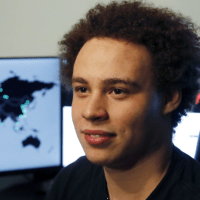

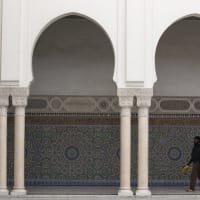

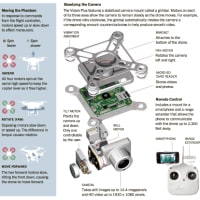
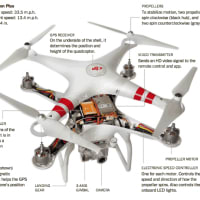
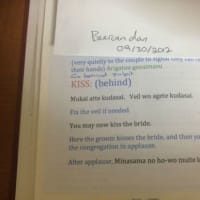
※コメント投稿者のブログIDはブログ作成者のみに通知されます